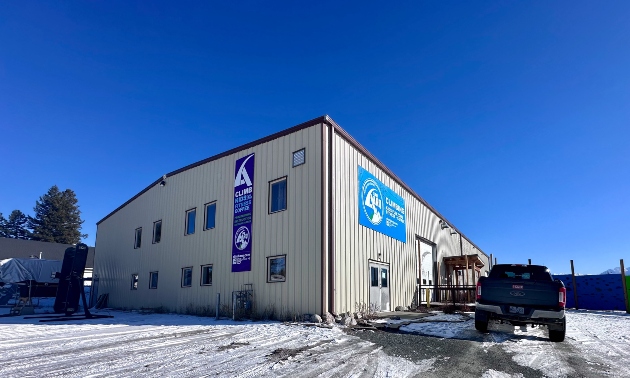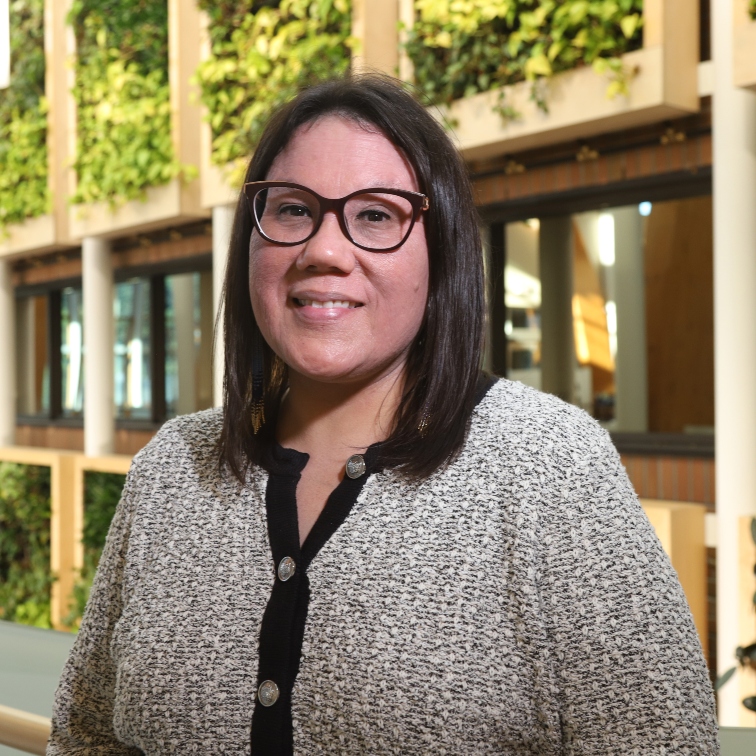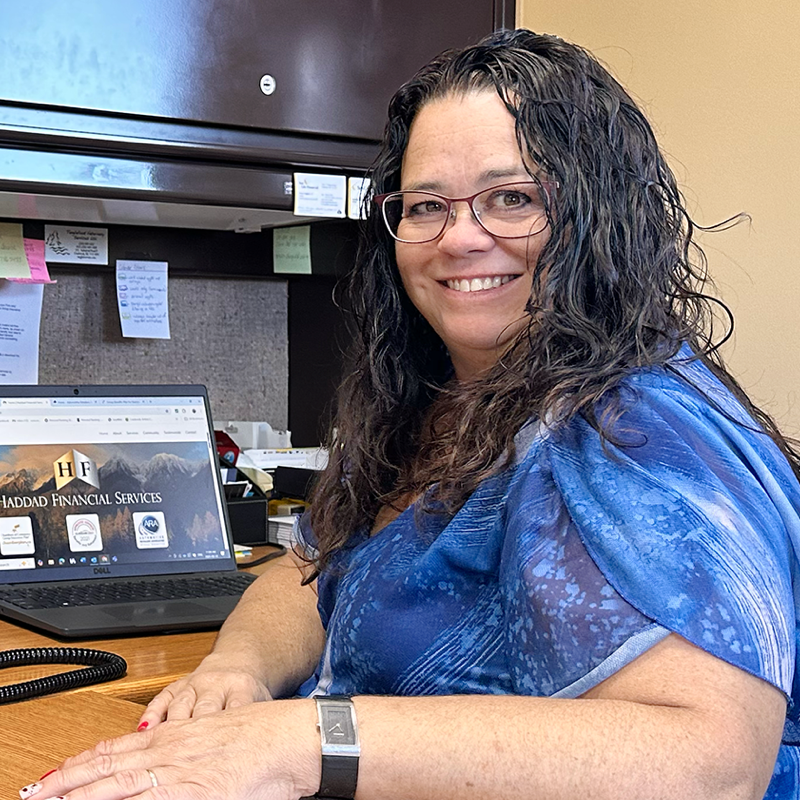Gordon McArthur is scaling new heights via Arq Mountain Centre
The owner of Arq Mountain Centre in Cranbrook, B.C., discusses the challenges of entrepreneurship, and the community he fosters

Gordon McArthur has overcome substantial challenges to create the successful company Arq is today. — Kerry Shellborn photo
In my interview with Gordon McArthur, the visionary behind Cranbrook's Arq Mountain Centre, I got a glimpse into the journey of a professional climber turned entrepreneur. From the inception of his dream to build a climbing haven to the challenges faced along the way, McArthur shares insights into the thriving climbing industry, the importance of community, and his passion for nurturing young climbers.
Who are you and what do you do?
Well, my name is Gordon McArthur, and I'm a professional climber. My goal was to plan out the future but then also to share my passion for the sport. The obvious next step beyond my own competitive journey was to build a facility. The climbing industry was just starting to build and boom—we may have even been a little early. My original plan for my gym was a building that was five times the size, because that's what the U.S. (industry) was at.
I soon realized that we're not there yet in Canada, so I'm very happy with what we built. It's very much established, and the sport is gaining so much momentum. We kind of came in at the right time, so all the delays I've faced in this project all sort of worked out.
Tell me about that, how did you go from a vision in your head to reality?
I have always loved teaching and I've taught many climbing camps and programs over the years. Due to that passion for teaching and sharing, it was just an easy avenue to go.down. Plus I've always had this weird business sense about me—and I don't really know where it came from because I was always told to avoid it!
The gym was something that I was very passionate about that I believed in and thought this community would do well with.
I found that Cranbrook is a slower community as far as keeping up with the times, but we're getting there and the gym is growing, and we're very excited about the momentum it's gaining.
What were some of the big challenges you had to overcome to get your business where it is today?
The finances would be the biggest thing, and in a project like this you're in the millions, so if you're not full of money then it's a pretty daunting endeavor to wrap your head around. I think often passion trumps logic and my energy behind this just would not accept that it wasn't possible. So I just kept pushing and kept pushing and I fell flat on my face three times. Like we were supposed to buy a building at one point and everything just sort of kept falling through. The last time it fell through, I was like, "I can't keep doing this," and then two days later the owner of this building called me and said, "I heard you need a building". We came and looked . . . and it was too short.
He's like "ah, but we can dig down" and here we are—so I think it was just my drive and passion for this sport that kept it going.

- Kerry Shellborn photo
What are some of the main features at Arq?
Our gym is broken up into a few major components.
Our dedicated kids area is one of the biggest draws for this community. We're going to be expanding that pretty soon, which will be awesome.
Then we've got the standard climbing, like our bouldering or roped area. But then we've also got fitness, and a lot of training stuff. I try to keep up with where the industry is at, but I also try to implement a lot of things that I've personally needed over the years for training. Then we've got the yoga studio, which has been really great for us, because it also acts as a room for birthday parties, movie nights and instructional stuff. So yeah, there's some key components that make up the success of the gym.
Tell us about some of the students or young climbers that you've helped train
Basically the day we opened, which would have been about seven and a half years ago, we formulated a team and it was just a bunch of ten-year-old kids—about 13 or 14 of them. Over the last seven years we've kept 80% of them and they've all turned into national athletes. Like every one of our athletes has gone to the national championships, and we've had one athlete get to the world championships several times now. I think our dedication and passion for growing youth climbers has really flourished based on the results we've seen. For me it's really wonderful to see, because I have such a love for competitive climbing that to be part of that journey with them has been awesome.
Cranbrook's been neat . . . it produces a lot of athletes. India Sherret just got her World Cup win in skiing cross and we heard about that a few weeks ago—she's one of my ex-employees and she gave me her Olympic jersey, actually she said the last one. She was one of the original staff. She still stops in from time to time.
This town has produced a lot of like superstars like that.
Why is climbing such a good activity for kids?
I think because it's multifaceted, it's three-dimensional, and there are so many goals that are attainable within it. You don't have to be a specific age or size or whatever, it's something that everybody can do and have fun with. It's so inviting and welcoming that you don't feel intimidated by it if you're with the right people in the right community—and we feel that we've built such a wonderful community within this gym. There's just so much room for personal growth, mentally and physically.
I know that for me, it's helped me through some very rough times. My wife always knows that something's wrong. She's just like,"Go climb and then come back and you'll be fine." And it's true, I've built up this level of stability through climbing.
Can you tell us more about the mental aspect of climbing?
I mean, if you have a climb that's, let's say, 30 feet tall—and there's a bunch of climbing holds that can get you to the top—every hold is progress.
Even if you're only getting to the third hold, it's still progress. There's just this mental side to climbing that allows for quick growth, relaxing growth or motivational growth, and I find that within climbing gyms and the community itself it's all mentally more stable. I mean I've played high school football, I've played hockey, I've played baseball, tennis, soccer, badminton—and they're all amazing sports, but there's just something about climbing that allows for so much personal growth at your own pace.
What would you say to parents who are nervous or don't know much about climbing?
That's such an interesting question because a lot lot of gyms will have signage that says climbing is dangerous. And in fact it is in a sense, but what we've done in this gym and many gyms around the world is that we've provided a controlled environment that gives that sense of safety. Whether it be through the staff, the equipment that we use or the safety checks that we do, we're very diligent to create that safe space and remove any sort of doubt or nervousness. I would say to a parent just to show up—we'll take them for a tour and show them how wonderful this place can be. If you just watch the kids here, it's the most wonderful thing. On one of our busier nights, (such as) Tuesday night . . . it is the most heartwarming thing to watch the youth excel, have fun, be active, and be themselves.
At what point did you know that you could make a business out of this?
When we were in the build stage of making this gym, it was probably the funnest three months of my whole life. We were just so wired and excited and stressed. It was just so neat and the energy was so electric—and the day we opened, I was like, "now it's actually real." It wasn't real before because I was so distracted by building it that I wasn't paying attention to the actual reality.
They say that business takes five to seven years. Well, we were at our fourth year, and then COVID-19 hit. It was like a reset back to square one again.
We had to try and make it through a tough time. So I would say two or three years ago we could feel momentum gaining, and it may take another three or four years to feel really comfortable. We're riding a wave of what we feel is success for sure.
It's hard and there's always debt and there's always money to be paid but but we can see that we're established in the community.
What would you say is one of the best pieces of advice somebody gave you?
Be patient. Don't rush like when I wanted to open the first idea of this gym. Someone said to me it seemed a little big and maybe I should start smaller and grow. I'm like "no we need to build the empire right now." I've learned over the years that they were a hundred per cent right—it would have never have succeeded or it would never have worked. Whereas the way that we did this, we put ourselves in a position of growth, and so that's only because people convinced me to just be patient. Take your time and don't rush.
Now you're seven years in and you're thinking of expanding—tell me about future goals
In the climbing industry, the most obvious way to expand is to open another gym. And in big cities, that's what people do. I've got several friends who own all the gyms in Calgary, it's the obvious move if you're in a big city. But Cranbrook can't support two climbing gyms. So for us, growth is the most important thing. More real estate, and growing within this building that we have, and establishing ourselves in that way. I've thought about opening a second gym, but if you were to do that, it would pull me away from Cranbrook because the closest place you get to is at least an hour from here, which means I'd be constantly travelling. I'm just not fully into that idea. Sometimes money distracts you from happiness and I can see it going down that road, whereas if we established ourselves via expansion here we can enjoy this community.
Tell us what you love about the community
I moved here from Invermere on a whim when I was 19, to go to college, and I'm still here. I've travelled the world 15 times over and there's still not one place that I can compare, which is very weird because Cranbrook is a wonderful place, but there's some pretty beautiful places in this world. There's just something about this city that just keeps pulling me back. The support that I've gotten on my own personal climbing competitive journey has been so instrumental. I wouldn't have been able to compete for Canada or go to the Olympics or anything like that without this community.
So I feel like I want to continue investing back into Cranbrook, so that others have the same opportunity, versus taking my business elsewhere.
Beyond your beautiful place—what areas are there for people to climb near Cranbrook?
In 2013 I wrote a guidebook for climbing in the Cranbrook/Kimberley area. There are a lot of venues—one of the most popular would be Lakit Lake. (Then there's) Lumberton, and up at St. Mary's near Jaffray. There's a great mix of planning and of all levels, so there's an abundance for sure.





Comments